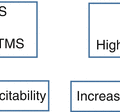© Springer International Publishing AG 2018
Stefano Masiero and Ugo Carraro (eds.)Rehabilitation Medicine for Elderly PatientsPractical Issues in Geriatricshttps://doi.org/10.1007/978-3-319-57406-6_5050. Physical Activity and Sexual Function in Older People
(1)
University Tor Vergata, Rome, Italy
50.1 Introduction
The number of people 65 years of age and older continues to rise in the Unites States of America (USA) and in the Western countries. In the USA in particular from approximately 35 million in 2000, the persons aged over 65 by 2030 will be 71 million, 20 million of whom will exceed the age of 80.
Almost 75% of elderly persons have at least one chronic illness, and about 50% have at least two chronic illnesses. The well-being and quality of life (QoL) of older people are often seriously compromised even in subjects not complaining of degenerative or vascular neurological diseases, psychiatric disorders, or oncological problems. A healthy lifestyle lowers risks of many diseases and promotes a feeling of well-being: a balanced diet and regular physical activity can help prevent some of the health problems associated with aging and reduced mobility.
In this context, multiple studies found that sexuality continues to be an important aspect of life for many adults throughout midlife and into old age [1–3]. The American Association of Retired Persons reported in 2005 that 62% of men and 51% of women between ages 60 and 69 believed sexual activity is an important component of a good relationship and an acceptable QoL: these figures declined slightly after age 70. With regard to that, the National Council of Aging (NCOA) reported that 71% of men in their sixties, over 57% in their seventies, and 27% in their eighties engaged in sexual activity at least once a month; these percentages were lower for women (51%, 30%, and 18%, respectively). The study of Bretschneider and McCoy concluded that the majority of women and men over eighties continued to fantasize about intimate contact with a partner, even if there are gender differences (41.2% of males aged 75–85 showed an interest in sex compared with 11.4% of females the same age [4, 5]). Then, it has been stated that many elderly persons enjoy an active sex life in contrast with the general perception of an “asexual” old age and the prevailing myth that aging and sexual dysfunction (SD) are inexorably linked.
The purpose of this chapter is to provide an overview of aging on the sexual life of “healthy” men and women and to describe the role of physical activity and exercise training as an important aspect of prevention and treatment of SD in the elderly.
50.2 Sexuality in Older Men and Women
Although erectile functioning tends to decline progressively beginning in midlife, it should not be inferred that erectile failure is an inevitable consequence of aging. Certainly older men suffer from multiple typical changes in erectile dysfunction (ED) and ejaculatory and orgasmic disorders: lengthier delay in reaching a full erection, less rigidity of the erect penis, fewer or no erections during sleep, increase latency to ejaculation, less forceful ejaculation, reduced volume of sperm expelled at each ejaculation, and lengthened refractory period following ejaculation (spanning sometimes as long as a few days). ED is prevalent among men and its presence is often an indicator of systemic disease. Risk factors for ED include cardiovascular disease, hypertension, diabetes mellitus (DM), tobacco use, hyperlipidemia, hypogonadism, lower urinary tract symptoms, metabolic syndrome, and depression. Addressing the modifiable risk factors frequently improves a patient’s overall health and increases life span. The literature suggests that smoking cessation, treatment of hyperlipidemia, and increasing physical activity will improve erectile function in many patients. How the treatment of DM, depression, and hypogonadism impacts erectile function is less clear. Clinicians need to be aware that certain antihypertensive agents can adversely impact erectile function. Androgen serum levels gradually decrease in men beginning around age 50 and are often implicated in the decline of sexual responsiveness; some studies suggest that the benefits of testosterone treatment for improving sexual function are limited to those whose testosterone levels fall below a relatively low “threshold” value that seems to be necessary to maintain an adequate sexual function.
Unlike men, whose sexual performances generally decrease after early adulthood, women’s sexual responsiveness does not show such a consistent pattern over the life span: the incidence of sexual problems in women may actually decrease after early adulthood, and sexual satisfaction among older women may remain somewhat higher that in men. Menopause is characterized by a dramatic reduction in estrogen, progesterone, and androgen levels. Sexual changes are well known: low desire (43%), reduction of vaginal lubrication (39%), lining of the vaginal wall thins, shortening of the vagina, atrophy of the genital tissues, orgasmic dysfunction, or inability to climax (34%) [6]. All these factors may lead to painful sexual intercourse (dyspareunia, vaginismus, and vulvar vestibulitis). Age-related changes in women somewhat mirror those that occur in men: these changes are related to vaginal lubrication, clitoral responses, and orgasm that tends to be briefer and associated with fewer muscular contractions. These declines in sexual responsiveness may be reduced sometimes by a regular sexual activity, although the mechanism of benefit is not understood. The role of estrogen and androgen supplementation in women is not clear: there are insufficient data for a clear risk-benefit of hormone treatment [7]. For reducing the risk of systemic estrogen therapy, localized estrogen preparations can be effective alternatives in order to improve vaginal dryness and irritation. There is not enough evidence that any of the complementary therapies available are any better than placebo for menopausal vasomotor symptoms and few safety data exist [8].
We have also to consider that women often avoid sexual intercourse because of pelvic floor dysfunction: not only overactive bladder and urinary incontinence (urgency, stress, or mixed urinary incontinence) but also, and more frequently, chronic pelvic or low back pain conditions may interfere with a good sexuality. Irrespective of the site of pain, women complaining of chronic pain generally are depressed, with higher pain scores associated with greater depression.
50.3 Sexuality as an Aspect of Healthy Aging
Clinical studies suggest that many elderly couples discontinue sexual activity due to illnesses, particularly in the male partner. Some chronic medical conditions among aged patients (including cardiovascular diseases, hypertension, and DM) are associated with various sexual problems in men and women. Sexual dysfunction heightens anger, frustration, and depression with the involvement of the partners that often present with similar symptoms. Patients with chronic heart failure (CHF) have sexual dysfunction that impairs QoL: recent trials have demonstrated that exercise training (ET) improves QoL of CHF patients, but it is not established whether this benefit may be associated with an improvement in SD.
Moreover, several drugs are commonly associated with sexual dysfunction. Besides benzodiazepines, tricyclic antidepressants and selective serotonin reuptake inhibitors (SSRIs), used for the treatment of depression, may have well-documented side effects: decreased sexual interest, sexual arousal difficulties, loss of libido, and hyporgasmia. Other drugs frequently associated with sexual complaints include beta-blockers and some diuretics. Consequently, the effects of current medication used should be considered in the sexual health assessment.
In the last years, there is a more and more growing evidence suggesting that lifestyle factor (particularly physical activity, eating right, not smoking, getting enough sleep, and balanced diet) may offer some protection against sexual problems, frequently associated with health concerns. In this regard, Derby et al. reported that obesity status was associated with ED, with baseline obesity predicting a higher risk regardless of follow-up weight loss, whereas physical activity status was associated with ED, with the highest risk among men who remained sedentary and the lowest among those who remained active or initiated physical activity [9].
50.4 Assessment of Sexual Function in the Elderly
A diagnosis should be made when symptoms cause distress or interpersonal problems.
The assessment of SD in elderly should include a sexual history, a discussion of how sexuality has been experienced over time, laboratory testing, health conditions (presence of comorbidities), concurrent medications, and psychological and neurological evaluation [1]. Moreover, in males particular attention must be given to patients with cardiovascular disease, following the algorithm for determining the level of sexual activity according to cardiac risk in patients with ED [10]. Actually, older males who present with complaints of ED should be screened for cardiovascular disease because comorbidity often exists even though most men are asymptomatic prior to the onset of an acute cardiac event. The rate of ED in older adult men with coronary artery disease (CAD) is increased compared to those without CAD. ED typically presents about 3 years prior to onset of CAD symptoms, and older men with ED have a 75% increased risk of developing peripheral vascular disease.
Stay updated, free articles. Join our Telegram channel

Full access? Get Clinical Tree





